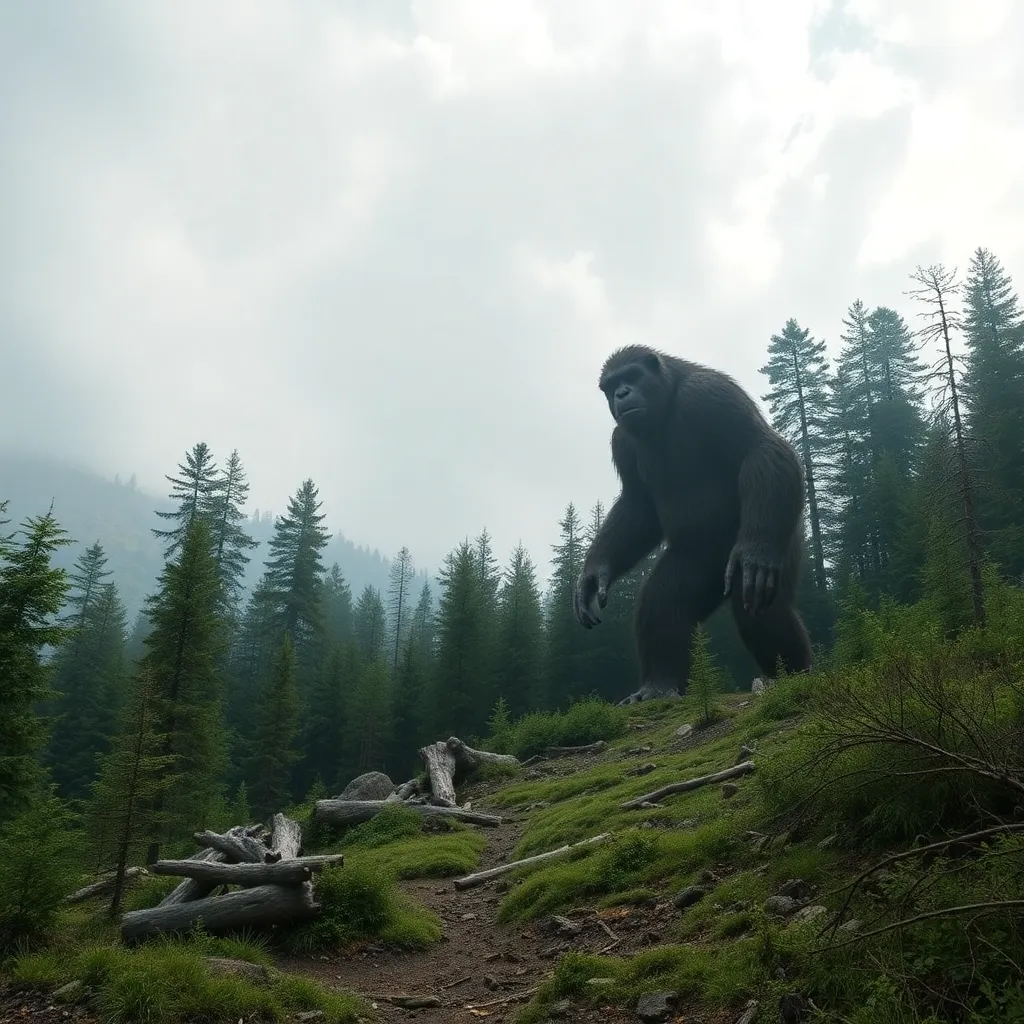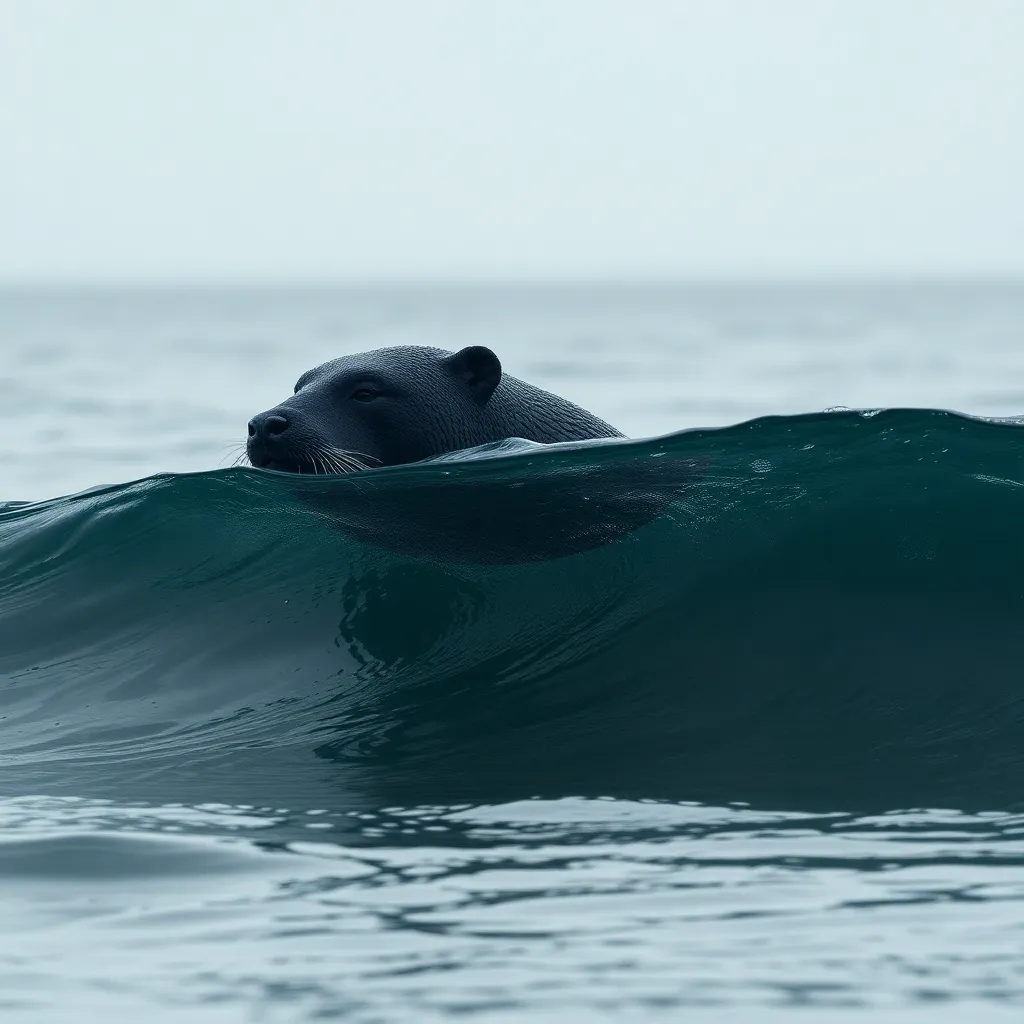The Bigfoot Phenomenon: A Global Perspective on Cryptid Lore
I. Introduction to Bigfoot and Cryptid Lore
Cryptids are creatures whose existence is based on anecdotal evidence and folklore rather than scientific proof. They hold significant cultural value across various societies, often representing the mysteries of nature and the unknown. Among these enigmatic beings, Bigfoot stands out as a prominent figure in cryptid mythology, captivating the imaginations of many.
This article aims to explore global perspectives on Bigfoot and similar creatures, delving into their origins, sightings, psychological significance, and cultural representations. By examining these aspects, we can gain a deeper understanding of why such legends endure in contemporary society.
II. Historical Origins of the Bigfoot Legend
The legend of Bigfoot, or Sasquatch, is deeply intertwined with Indigenous folklore in North America. Tribes such as the Salish and the Algonquin have spoken of large, hairy beings that roam the forests, often attributing spiritual significance to them. These stories date back centuries, long before European settlers arrived on the continent.
As society evolved, so did the portrayal of Bigfoot in popular culture. The mid-20th century saw a surge in fascination with the creature, fueled by sensationalized media reports and movies. The infamous Patterson-Gimlin film of 1967 further cemented Bigfoot’s status as a cultural icon.
When compared to other ancient myths, such as the Yeti of the Himalayas or the Almasty of the Caucasus, Bigfoot represents a universal archetype of elusive, large creatures that inhabit the fringes of human civilization. These narratives often stem from humanity’s desire to explain the unexplained and connect with the natural world.
III. Bigfoot Sightings: A Review of Evidence
Throughout the years, numerous sightings and encounters have been reported in North America. Some of the most famous include:
- The 1967 Patterson-Gimlin film, which purportedly shows a female Bigfoot walking in the woods.
- The 2008 “Bigfoot in Ohio” sighting, where a man claimed to capture footage of the creature.
- Various footprint discoveries, often analyzed by enthusiasts and skeptics alike.
Photographic and video evidence plays a crucial role in the Bigfoot narrative. However, many of these pieces of evidence have been called into question regarding their authenticity. The prevalence of hoaxes and the subsequent debunking efforts by skeptics have contributed to a complex relationship with the evidence surrounding Bigfoot.
IV. Global Variants of the Bigfoot Myth
While Bigfoot is primarily associated with North America, various cultures around the world have their own versions of large, elusive creatures:
- The Yeti in the Himalayas: Known as the “Abominable Snowman,” the Yeti holds significant cultural importance in Tibetan and Nepalese folklore, often considered a protector of the mountains.
- The Yowie in Australia: Similar to Bigfoot, the Yowie is described as a hairy, human-like creature and is deeply embedded in Aboriginal mythology.
- Sasquatch in South America: Various Indigenous tribes in the Amazon speak of a similar creature, known for its stealth and elusive behavior.
- The Almasty in Russia: This hairy, ape-like creature is said to inhabit the Caucasus Mountains and has been the subject of numerous expeditions and studies.
These international counterparts highlight the universal fascination with cryptids and the cultural significance they carry within their respective societies.
V. The Psychology Behind Bigfoot Belief
The belief in Bigfoot can be attributed to several psychological factors. Humans are naturally inclined to seek patterns and explanations for the unknown, leading many to embrace the idea of cryptids as a way to make sense of their environment.
Cognitive biases, such as confirmation bias, play a crucial role in perpetuating Bigfoot beliefs. Individuals may selectively gather evidence that supports their belief while dismissing contradictory information. Additionally, folklore and cultural narratives shape these beliefs, providing a shared context for those who engage with the myth.
Social media has also significantly impacted the Bigfoot phenomenon, creating communities where enthusiasts can share sightings, theories, and evidence. This online presence fosters a sense of belonging and validation for those who believe in the existence of Bigfoot.
VI. Scientific Perspectives on Bigfoot
The scientific community remains largely skeptical about the existence of Bigfoot. Numerous studies have attempted to find biological evidence, including DNA analyses of purported Bigfoot hair samples. However, these studies often yield inconclusive results, further fueling the debate.
Skepticism is rooted in the lack of concrete evidence and the reliance on anecdotal claims. Scientists emphasize the importance of empirical evidence and often express concerns regarding the methodologies used by those who investigate cryptids.
The intersection of science and folklore offers valuable insights into how humans engage with the unknown. Understanding cryptids like Bigfoot through a scientific lens allows for a more nuanced perspective on belief systems and cultural narratives.
VII. Bigfoot in Modern Media and Pop Culture
Bigfoot has become a staple of modern media, appearing in films, television shows, and literature. Popular representations often exaggerate or sensationalize the creature, contributing to its mythos:
- Films like “Harry and the Hendersons” and documentaries such as “Finding Bigfoot” have shaped public perceptions of the creature.
- Television series often explore the mystery surrounding Bigfoot, attracting audiences with tales of encounters and investigations.
- Bigfoot merchandise, from toys to apparel, underscores the creature’s role in popular culture, making it a recognizable figure worldwide.
This representation in media has solidified Bigfoot’s status as a cultural icon, reinforcing the fascination with cryptids while often blurring the lines between reality and fiction.
VIII. Conclusion: The Enduring Allure of Bigfoot
Bigfoot remains a compelling figure in contemporary society, symbolizing humanity’s enduring curiosity about the unknown. The cultural significance of Bigfoot transcends geographical boundaries, resonating with individuals across different backgrounds and beliefs.
As scientific advancements continue to progress, the future of Bigfoot lore may evolve. However, the allure of the myth will likely endure, reflecting the intersection of belief, culture, and human experience. Whether viewed as a genuine possibility or a captivating story, Bigfoot represents the timeless human desire to explore the mysteries of our world.



